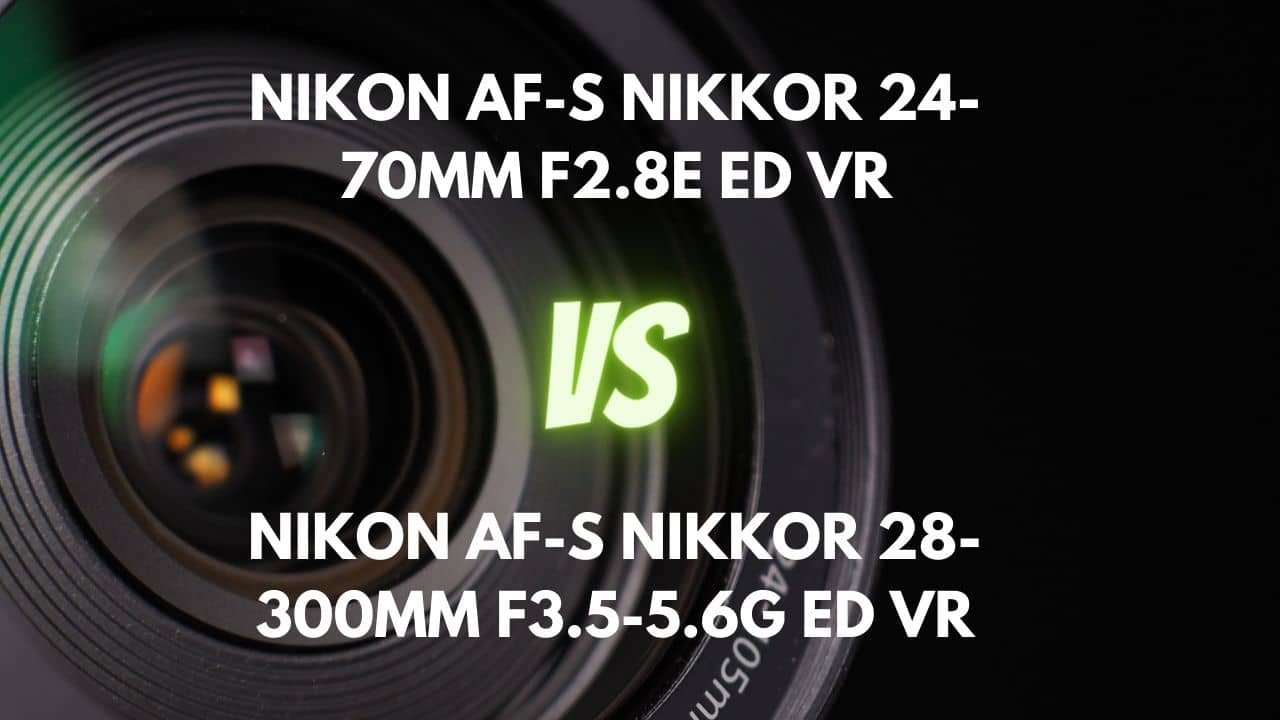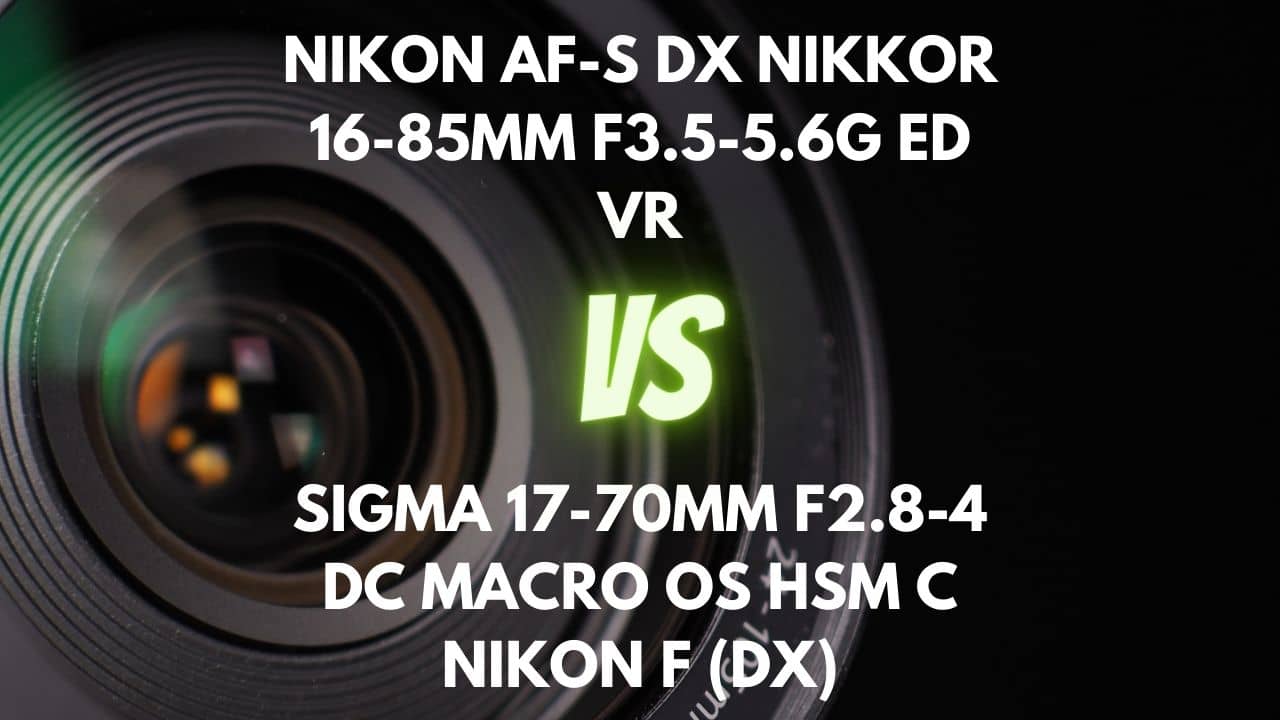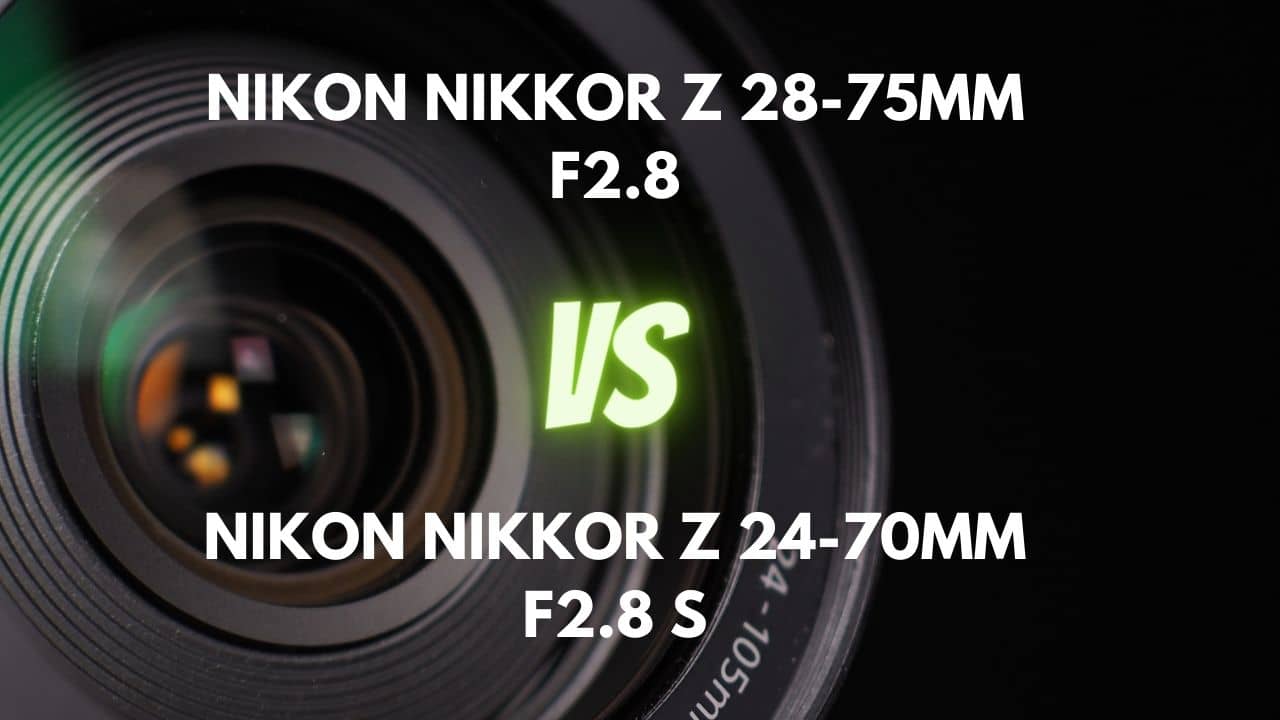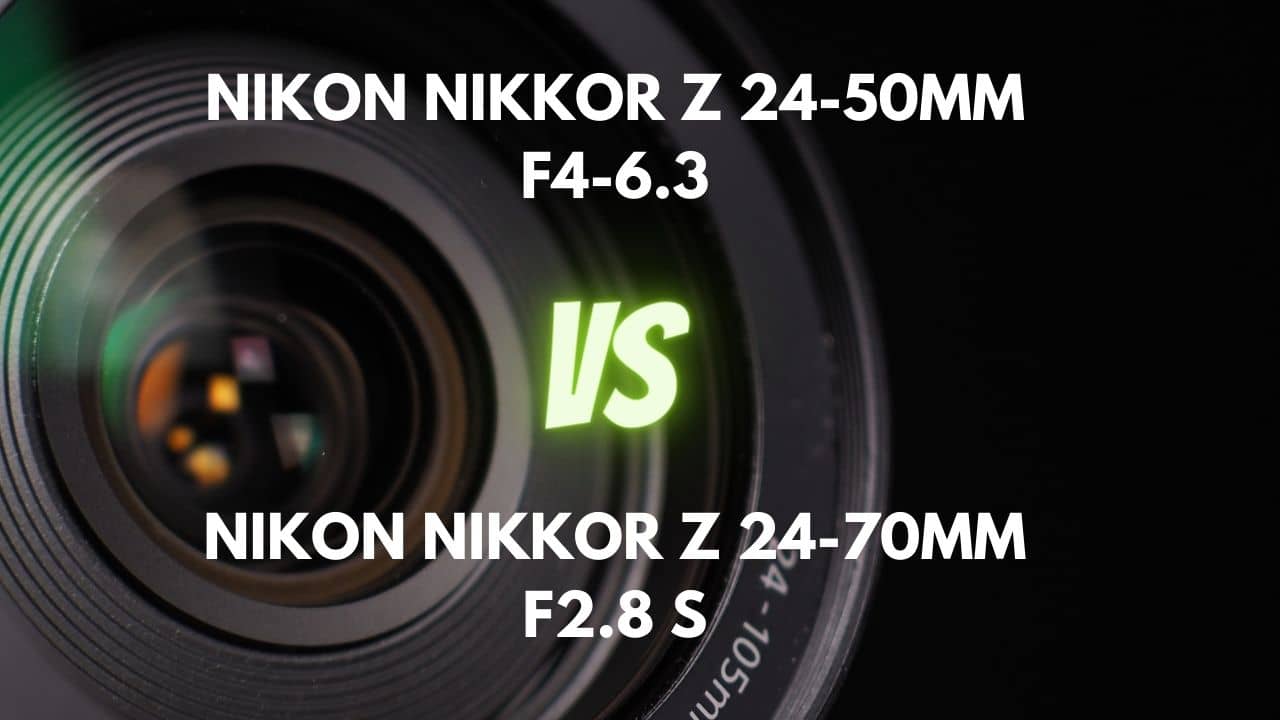Are you looking to expand your photography toolkit and find yourself torn between the Nikon DX 18-70mm f/3.5-4.5 and Nikon DX 18-105mm f/3.5-5.6? You’re not alone!
These two versatile lenses cater to different photography styles, making it essential to understand their strengths and weaknesses to make an informed decision.
In this comprehensive comparison, we dive deep into the world of wide-angle and telephoto photography, exploring the unique features and performance of both lenses across various genres, from capturing stunning landscapes to snapping intimate portraits.
By reading this article, you’ll gain insights into the critical factors that should influence your choice, such as durability, weather protection, focusing performance, chromatic aberration control, sharpness, distortion, and more. We’ll also highlight the benefits of each lens, helping you determine which one aligns best with your photography needs and preferences.
Get ready to embark on a journey of discovery, as we unravel the secrets behind the 18-70mm and 18-105mm lenses, empowering you to capture breathtaking images that truly reflect your artistic vision.
Stay tuned and let the comparison begin!
Overview
| Nikon AF-S DX NIKKOR 18-70mm F3.5-4.5G IF-ED | Nikon AF-S DX NIKKOR 18-105mm F3.5-5.6G ED VR | |
|---|---|---|
| Max Aperture | F3.5-4.5 | F3.5-5.6 |
| Aperture Type | Variable | Variable |
| Focal Range (mm) | 18-70 | 18-105 |
| Max Format | APS-C / DX | APS-C / DX |
| Zoom Ratio (X) | 3.9 | 5.8 |
Comparing the Nikon DX 18-70mm f/3.5-4.5 and the Nikon DX 18-105mm f/3.5-5.6 in the table, we can see some key differences.
The 18-70mm lens has a maximum aperture of f/3.5-4.5, while the 18-105mm lens has a slightly narrower maximum aperture of f/3.5-5.6. Both lenses have variable apertures and are designed for APS-C / DX format cameras.
The 18-70mm lens offers a wider maximum aperture, which can result in better low light performance and a shallower depth of field, making it suitable for isolating subjects and creating pleasing background blur. However, it has a shorter focal range (18-70mm) compared to the 18-105mm lens, which could limit its versatility for certain types of photography.
On the other hand, the 18-105mm lens provides a broader focal range (18-105mm), allowing for more flexibility in composition and framing. This makes it suitable for various photography genres, such as travel, events, or sports photography. However, the narrower maximum aperture (f/3.5-5.6) may impact its low light performance and depth of field control compared to the 18-70mm lens.
In conclusion, choosing the superior lens depends on your specific needs and preferences. The 18-70mm lens with its wider maximum aperture may be more suitable for photographers prioritizing low light performance and depth of field control, while the 18-105mm lens with its broader focal range offers greater versatility for various photography genres.
Design and Ease of Use
| Nikon AF-S DX NIKKOR 18-70mm F3.5-4.5G IF-ED | Nikon AF-S DX NIKKOR 18-105mm F3.5-5.6G ED VR | |
|---|---|---|
| Diameter x Length (mm) | ⌀73×75.5mm | ⌀76×89mm |
| Weight (gr) | 390 | 420 |
| Filter Thread (mm) | 67 | 67 |
| Weather Sealing | No | No |
| Zoom Method | Rotary (extending) | Rotary (extending) |
| Distance Scale | Yes | No |
| DoF Scale | No | No |
| Hood Supplied | Yes | Yes |
| Hood Code | HB-32 | HB-32 |
The Nikon DX 18-70mm f/3.5-4.5 has a slightly smaller diameter and length (⌀73×75.5mm) compared to the Nikon DX 18-105mm f/3.5-5.6 (⌀76×89mm), making it more compact and easier to carry around. It’s also lighter, weighing 390 grams compared to the 18-105mm lens’s 420 grams. This difference in weight can impact the overall balance of your camera setup, making it more comfortable to handle, especially during longer shoots.
Both lenses use a rotary (extending) zoom method, which means that the lens physically extends when you zoom in or out. This design tends to be simpler and lighter, but it can make the lens more cumbersome to handle, and achieving effective weather sealing can be more difficult.
In summary, the 18-70mm lens is more compact and lighter than the 18-105mm lens, making it a better choice for photographers who prioritize portability and ease of handling. However, the trade-off is a shorter focal range compared to the 18-105mm lens.
Lens Mount and Barrel
The Nikon DX 18-70mm f/3.5-4.5 has a metal lens mount with a rubber sealing gasket, which is a notable feature for its price class. This indicates that the lens may be more durable and potentially weather-sealed. The lens barrel is made of high-quality plastics and has a slightly textured finish that resists marks. However, the barrel extends about an inch and a half at 70mm and rotates slightly during zoom, which may necessitate readjusting filters.
On the other hand, the Nikon DX 18-105mm f/3.5-5.6 has a hard plastic lens mount without a rubber gasket, suggesting that it is not weather-sealed. Its lens barrel is predominantly made of plastic with a textured finish to match Nikon camera bodies, using industrial polycarbonate for durability. The lens extends nearly two extra inches at the 105mm end due to its non-internal zoom action.
Plastic lens barrels are generally lighter and more affordable but may not be as durable as metal ones. Metal lens mounts, like the one found on the 18-70mm lens, are usually stronger and more reliable, while plastic lens mounts, as seen on the 18-105mm lens, are less expensive but not as durable.
In conclusion, the 18-70mm lens with its metal lens mount and rubber gasket offers superior durability and potential weather sealing compared to the 18-105mm lens, which uses a plastic lens mount.
Weather Sealing
The Nikon DX 18-70mm f/3.5-4.5 features weather sealing around the gasket, providing some protection against environmental elements. However, it lacks internal seals at the rings, switches, and front of the barrel, which means it is not fully weather-sealed.
In contrast, the Nikon DX 18-105mm f/3.5-5.6 is not weather-sealed at all, offering no protection against dust, moisture, or light water splashes. It does not have internal seals or a gasket at the lens mount, and it lacks a fluorine coating on the front element.
Weather sealing is a valuable feature for photographers who often shoot in harsh conditions, as it provides better protection against dust, moisture, and light water splashes, ensuring durability and performance in various weather conditions. Fully weather-sealed lenses offer superior protection and performance compared to non-sealed lenses, particularly in challenging environments.
Between the two lenses, the 18-70mm lens with weather sealing around the gasket is superior in terms of weather protection compared to the 18-105mm lens, which lacks any weather sealing.
Rings
The Nikon DX 18-70mm f/3.5-4.5 features a thin focus ring and a large rubberized zoom ring. While the texture on the rings could be improved for better differentiation, users will likely adjust to it over time. The zoom ring is stiff and not fluid, and the barrel extends a fair amount during zoom, which may require filter readjustments.
However, the focus ring is decent and provides a reasonable amount of resistance. The lens has a distance scale, but it lacks depth-of-field or infrared markings, as well as a hyperfocal point marking.
On the other hand, the Nikon DX 18-105mm f/3.5-5.6 has two rings: a wide ribbed rubber-textured zoom ring positioned towards the front of the barrel and a thin focus ring behind it with a ridged rubber coating. The zoom ring travels roughly 80 degrees with a nice resistance, while the focus ring offers around 100 degrees of travel, which is not ideal for manual focus control.
Both rings move smoothly and positively. There is no windowed distance scale or depth-of-field indicator on the lens, and no zoom lock is provided. The tactile experience of both rings is decent, but there are no ergonomic bevels.
When comparing the rings of these lenses, the 18-105mm lens appears to have a more ergonomic design, offering a smoother and more positive movement. However, the focus ring’s limited travel could make manual focus control challenging. The 18-70mm lens offers a reasonable amount of resistance on the focus ring but could benefit from improvements to the texture and differentiation of the rings.
In conclusion, while both lenses have their own strengths and weaknesses, the 18-105mm lens provides a more comfortable and positive tactile experience with its rings, making it superior in terms of ergonomics and handling. However, depending on your specific needs and preferences as a photographer, you may still prefer the 18-70mm lens for its focus ring resistance and distance scale.
Switches/Buttons
The Nikon DX 18-70mm f/3.5-4.5 features a Manual Focus button on its left side, which can be set to the M/A position for autofocus with manual override or the M position for manual focus only. This lens does not have any other switches or buttons.
In contrast, the Nikon DX 18-105mm f/3.5-5.6 comes with two control switches on its left side: one for enabling or disabling autofocus (A or M) and another for enabling or disabling vibration reduction (ON or OFF). This lens also lacks any additional switches or buttons.
Comparing the switches/buttons of these two lenses, the 18-105mm lens offers an extra control switch for vibration reduction, providing greater versatility and convenience in various shooting situations. The 18-70mm lens has a manual focus button that allows for autofocus with manual override, but it lacks the added functionality of vibration reduction control.
In conclusion, the 18-105mm lens has a superior configuration of switches/buttons due to the added vibration reduction control. This feature offers an advantage in stabilizing images and enhancing overall shooting experience, making the 18-105mm lens more versatile and user-friendly compared to the 18-70mm lens.
Filter Thread
The Nikon DX 18-70mm f/3.5-4.5 features a 67mm filter thread size made of high-quality plastics. Its front element remains stationary during focusing due to the lens’s internal focusing mechanism, making it easy to use with graduated and polarizing filters. However, the 67mm diameter can make filters, especially circular polarizers, quite pricey and may require users to purchase step-up rings to use with larger filter sizes.
On the other hand, the Nikon DX 18-105mm f/3.5-5.6 also has a 67mm filter thread size, but it is made of plastic. Like the 18-70mm lens, the filter thread does not rotate during focus or zooming, allowing for easy use with polarizers and ND graduated filters.
Both lenses share the same filter thread size of 67mm, offering compatibility with the same filters. And both lenses deliver similar convenience and performance when it comes to using filters.
Lens Hood
Both the Nikon DX 18-70mm f/3.5-4.5 and Nikon DX 18-105mm f/3.5-5.6 come with the same petal-shaped lens hood, which is included in the box and attaches via a bayonet mount. Made of plastic, this hood provides decent shielding for the front element from extraneous light that may cause flare or loss of contrast. The lens hood can also be reversed for storage, and it adds an additional 1.25 inches to the overall length of the lens.
While the lens hood is not flocked on the inside, it does a fairly good job of protecting the front element from sunlight coming in at oblique angles. The lens hood’s shallow design doesn’t provide a lot of shading, but it’s better than having no hood at all. However, the hood can rotate slightly during zoom, which means that you may need to readjust filters.
Focusing and Optical Stabilization
| Nikon AF-S DX NIKKOR 18-70mm F3.5-4.5G IF-ED | Nikon AF-S DX NIKKOR 18-105mm F3.5-5.6G ED VR | |
|---|---|---|
| Autofocus | Yes | Yes |
| AF Motor | Silent Wave Motor | Silent Wave Motor |
| Rotating Front Element | Does not rotate on focusing | Does not rotate on focusing |
| Min Focus Distance | 0.38m | 0.45m |
| Max Magnification (X) | 0.16 | 0.2 |
| Full-Time Manual Focus | Yes | Yes |
| Focus Method | Internal | Internal |
Focusing Performance
The Nikon DX 18-70mm f/3.5-4.5 boasts excellent autofocus performance due to its silent wave motor, which ensures fast and silent focusing. It performs exceptionally well in bright light situations, but may lag slightly in low-light conditions, particularly at the telephoto end. Nevertheless, it is still capable of decent performance indoors under reasonable lighting.
This lens offers manual focus override, enabling users to adjust the focus without switching to manual mode. The smooth manual focus action and thin focus ring allow for straightforward fine adjustments. The lens also features an internally focusing design, ensuring that the length remains constant regardless of focus and zoom settings.
On the other hand, the Nikon DX 18-105mm f/3.5-5.6 features a Silent Wave Motor drive, delivering quick and virtually silent autofocus operation. While not as fast as higher-grade AF-S lenses, it works accurately and reasonably quickly. Autofocus can be overridden at any time by simply turning the focus ring, and the manual focus action is easy to operate.
The lens has an internally focusing design as well, maintaining a constant length regardless of the focus and zoom settings. Autofocus performance is adequate for most purposes but may slow down noticeably in low-light situations, especially at the longer end of the zoom.
In conclusion, both lenses exhibit strong focusing performance, with the 18-70mm lens slightly outperforming the 18-105mm lens in terms of speed and efficiency, particularly in bright light situations. The manual focus override and smooth manual focus action are also advantages for the 18-70mm lens. However, both lenses are suitable for a variety of shooting situations, and the choice between them may ultimately depend on your specific photography needs and preferences.
Optical Stabilization
The Nikon DX 18-70mm f/3.5-4.5 does not feature optical stabilization, making it necessary to use proper camera-holding techniques and, if needed, a tripod or other support to avoid camera shake at slower shutter speeds, especially at longer focal lengths.
In contrast, the Nikon DX 18-105mm f/3.5-5.6 is equipped with Nikon’s Vibration Reduction (VR) image stabilization system, providing up to 3 stops of stabilization and enabling sharp shots at slower shutter speeds. The VR system has a single stabilization mode and doesn’t offer the VR Active mode found on some higher-grade VR lenses. Nevertheless, the VR system is effective, quiet, and can be toggled via a switch on the lens barrel. At 50mm, the 18-105mm lens can be handheld at shutter speeds as slow as 1/8 second, and at 70mm, sharp images can be achieved at 1/13 second.
Optical stabilization is generally less critical in some situations, but it can be beneficial in low-light conditions, handheld shooting at slower shutter speeds, or when recording video. If your camera has in-body image stabilization (IBIS), the need for optical stabilization may be even less critical.
In conclusion, the 18-105mm lens with its Vibration Reduction system is superior in terms of optical stabilization compared to the 18-70mm lens, which lacks this feature.
Image Quality
| Nikon AF-S DX NIKKOR 18-70mm F3.5-4.5G IF-ED | Nikon AF-S DX NIKKOR 18-105mm F3.5-5.6G ED VR | |
|---|---|---|
| Special Elements | 3x ED glass elements and 1x aspherical lens element | ED glass element and aspherical lens element |
| Diaphragm Blades | 7 | 7 |
| Circular Aperture | Yes | Yes |
Aberration
The Nikon DX 18-70mm f/3.5-4.5 exhibits well-controlled chromatic aberration throughout its focal length range, with only minimal visible issues in high contrast regions towards the edges of the frame at either end of the zoom.
On the other hand, the Nikon DX 18-105mm f/3.5-5.6 shows some evidence of chromatic aberration, particularly at its widest focal length of 18mm. However, the level of aberration should be largely acceptable unless producing very large prints.
In general, chromatic aberration is well-managed across all focal lengths in the 18-105mm lens, with the choice of aperture not having a significant influence. The borders may experience some chromatic aberration and light fall-off when used wide open, but they are quite sharp in the f/5.6-f/11 range.
In conclusion, the 18-70mm lens has a slight edge over the 18-105mm lens in terms of chromatic aberration control. While the 18-105mm lens does exhibit some aberration, especially at the widest focal length, it still performs reasonably well across its range. However, both lenses offer acceptable performance in this aspect, making them suitable for various photography needs.
Sharpness
The Nikon DX 18-70mm f/3.5-4.5 boasts excellent sharpness performance, with remarkable center sharpness even at the maximum aperture. The clarity improves towards the edges of the frame as the lens is stopped down, achieving peak quality across the frame between f/5.6 and f/8 at all focal lengths. The sharpness remains impressive even at f/3.5 or f/4.5 at the tele end, and the lens is very sharp when stopped down to f/8.
In contrast, the Nikon DX 18-105mm f/3.5-5.6 displays consistent sharpness performance throughout the zoom range, with outstanding results at all focal lengths. Wide open aperture may result in some chromatic aberration and light fall-off, but sharpness improves rapidly upon stopping down, reaching peak performance at f/11. At f/16, the edges are still very sharp, and even f/22 is sharper than the wide open aperture.
Corner softness can be noticeable in some cases but can be improved by stopping down the lens. The level of sharpness should be largely acceptable for producing prints, except when the lens is stopped down beyond f/16 at 105mm.
In conclusion, both lenses offer remarkable sharpness performance. The 18-70mm lens slightly outperforms the 18-105mm lens in terms of edge-to-edge sharpness and peak quality across the frame. However, the 18-105mm lens still provides consistent sharpness throughout its zoom range and is largely acceptable for producing prints.
Bokeh Quality
The Nikon DX 18-70mm f/3.5-4.5 generates bokeh that is generally unremarkable and not particularly smooth. The out-of-focus areas can appear somewhat busy and exhibit an onion-skinned pattern. While the bokeh may not be exceptionally pleasing or beautiful, it is fairly typical for a lens in this category and price range.
On the other hand, the Nikon DX 18-105mm f/3.5-5.6 employs an iris diaphragm with 7 rounded blades, resulting in soft and quite attractive bokeh. The pleasing rendering of the out-of-focus areas is characterized by a beautiful bokeh around the center and a cat’s eye shape in the corners. Overall, the efforts to render pleasing out-of-focus areas have been largely successful.
In conclusion, the 18-105mm lens delivers superior bokeh quality compared to the 18-70mm lens, providing soft and attractive out-of-focus areas. While bokeh quality may not be a primary concern for every situation, the 18-105mm lens offers a creative edge in situations where a pleasing bokeh can enhance the image, such as portraits or close-up photography.
Flare/Ghosting
The Nikon DX 18-70mm f/3.5-4.5 is fairly resistant to flare and ghosting, even when shooting into the light. The supplied hood does an excellent job of shielding the front element from extraneous light that may cause flare or loss of contrast.
However, if the light source is directly in the picture, there may be some contrast reduction or ghosting, which is typical of virtually all modern zooms. Flare performance is quite good except for direct sunlight, and it’s important to watch where you place the horizon in the frame or take care of it in post-processing.
In contrast, the Nikon DX 18-105mm f/3.5-5.6 is quite resistant to flare and ghosting, even when pointing light sources in the frame. However, it is sensitive to backlight, so ghosting and flare can still be seen in certain situations. The petal-shaped lens hood that comes with this lens does an excellent job of shielding the front element from unwanted light outside of the image frame.
In conclusion, both lenses demonstrate good flare and ghosting resistance, but the 18-105mm lens has a slight edge due to its overall resistance, even with light sources in the frame.
Vignetting
The Nikon DX 18-70mm f/3.5-4.5 suffers from noticeable vignetting at 18mm, especially when used wide open. However, stopping down to f/8 or beyond can greatly reduce the issue, and post-processing software can also easily remove it. The amount of vignetting varies at different focal lengths, with 50mm being the best and 18mm being the worst. Some users have reported that using a polarizing filter exacerbates the issue.
On the other hand, the Nikon DX 18-105mm f/3.5-5.6 shows some evidence of corner shading, particularly at wider apertures and focal lengths. Nonetheless, it is fairly subtle and can be easily corrected with smaller apertures. At 18mm and f/3.5, the corners are about 1.85 stops darker than the image center, while at 105mm and f/5.6, the corners are about 2.47 stops darker.
Stopping down to f/11 results in visually uniform illumination across the image. Some users may not find the vignetting to be a serious problem, especially when using the lens with a camera body that has built-in vignetting control.
In conclusion, while both lenses exhibit some degree of vignetting, the 18-105mm lens has a slight advantage due to its more subtle corner shading and the ability to achieve visually uniform illumination by stopping down to f/11. This makes the 18-105mm lens superior in terms of vignetting performance.
Distortion
The Nikon DX 18-70mm f/3.5-4.5 exhibits some distortion, particularly at the wide end (18mm), where barrel distortion is present, measuring at 4.22% according to Imatest. However, the distortion is uniform across the frame, making it relatively easy to correct in post-processing software. At 70mm, the lens shows a much lower level of distortion, with only 0.484% pincushion distortion, which is much less noticeable.
In contrast, the Nikon DX 18-105mm f/3.5-5.6 shows some form of distortion at almost all focal lengths. At its widest point of 18mm, it exhibits noticeable barrel distortion, which can be corrected in post-processing software. From 24mm onwards, a complex distortion profile is observed, where the edges of the image exhibit pincushion-style distortion while the center exhibits barrel distortion. This creates a “moustache” effect, where straight lines bend in different directions.
At 35-50mm focal lengths, the distortion is less pronounced, making them a bit more forgiving. However, there is no focal length setting where the lens produces a distortion-free image. While some lenses in its class may have worse distortion, the non-linear and complex nature of the 18-105mm’s distortion makes it challenging to correct in-camera or in post-processing.
In conclusion, the 18-70mm lens offers superior distortion performance compared to the 18-105mm lens, primarily due to its uniform distortion across the frame and the ease with which it can be corrected in post-processing. The 18-105mm lens, with its complex and non-linear distortion profile, presents more challenges when trying to achieve distortion-free images.
Final Verdict
In conclusion, the choice between the Nikon DX 18-70mm f/3.5-4.5 and Nikon DX 18-105mm f/3.5-5.6 depends on your specific needs and preferences.
The 18-70mm lens excels in terms of durability, weather protection, focusing performance, chromatic aberration control, sharpness, and distortion. It is also more compact, lighter, and has a wider maximum aperture, making it ideal for low-light photography and depth of field control.
On the other hand, the 18-105mm lens boasts superior optical stabilization, bokeh quality, flare/ghosting resistance, and vignetting performance. With its broader focal range, it offers greater versatility for various photography genres.
Ultimately, your decision should be based on the aspects that are most important for your photography style and the situations in which you will use the lens. If durability, low-light performance, and distortion control are your priorities, the 18-70mm lens would be the better choice. If versatility, optical stabilization, and superior bokeh quality are more important to you, the 18-105mm lens would be the more suitable option.






